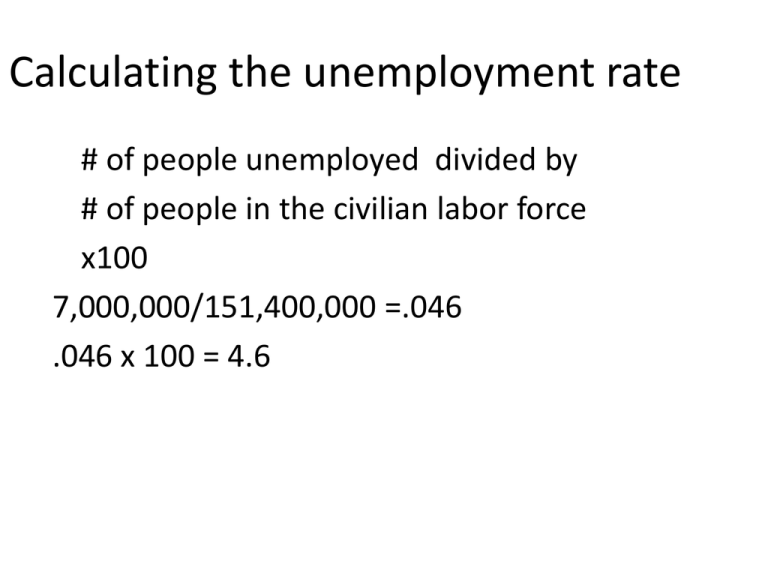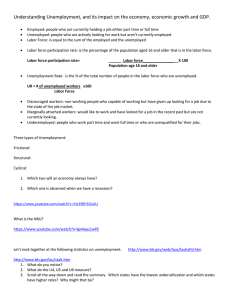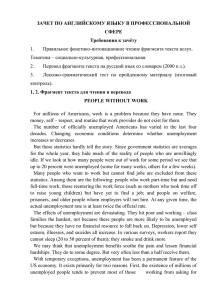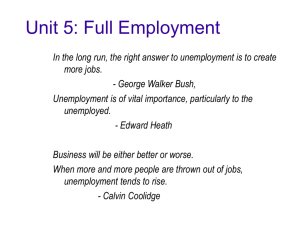Case 1: The Incredible Shrinking Labor Force
advertisement

Calculating the unemployment rate # of people unemployed divided by # of people in the civilian labor force x100 7,000,000/151,400,000 =.046 .046 x 100 = 4.6 LF=labor force U=unemployed • • • • • LF=100,000,000, U=5,000,000 LF=275,000,000, U=7,000,000 LF=46,789,000, U=2,563,000 LF=18,739,000, U=1,045,996 LF=1,198,000,000, U=211,000,000 • Figure out the Unemployment rate for each example Case 1 • Suppose an economy has a labor force of 125 people and there are currently 100 jobs filled. Determine the number of employed, unemployed, and the unemployment rate. Now suppose that 5 people who had jobs share a big lottery prize and decide to retire for the rest of their lives. Assuming the same number of jobs are filled after these people retire, compute the number of employed, unemployed, and unemployment rate. • What conclusions can you draw from this example? Unemployed / Employed + Unemployed • Initially - employed = 100, unemployed = 25, unemployment rate = 25/125 =1/5 or 20% • After the lottery - employed = 100, unemployed = 20, unemployment rate = 20/120 = 1/6 or 17% • Even when the number of jobs remains the same, the unemployment rate will change if the size of the labor force changes. The same number of people (5) was subtracted from both the numerator and denominator, resulting in a smaller fraction or ratio.) Case 2 • Suppose an economy has a labor force of 100 people and 70 jobs, with 30 of those jobs in the public/government sector. Determine the number of employed, unemployed, and the unemployment rate. Suppose the government decides it is unacceptable to have an unemployment rate this high. Officials declare that two workers instead of one will now be hired to fill each of the current 30 government jobs. The amount of production done will not change, but two workers will do what was previously done by one worker. Given these changes, recompute the number employed, unemployed, and the unemployment rate. • What conclusions can you draw from this example? Unemployment 0 • Initially - employed = 70, unemployed = 30, unemployment rate = 30/100 or 30% • After the new government policy is adopted employed = 100, unemployed = 0, unemployment rate = 0 percent • Unemployment rates do not measure how productive workers are. If production levels remain the same but more people are employed, employment rises and unemployment falls. But productivity or output per worker is also lower • http://www.econedlink.org/lessons/index.php ?lid=1117&type=student





